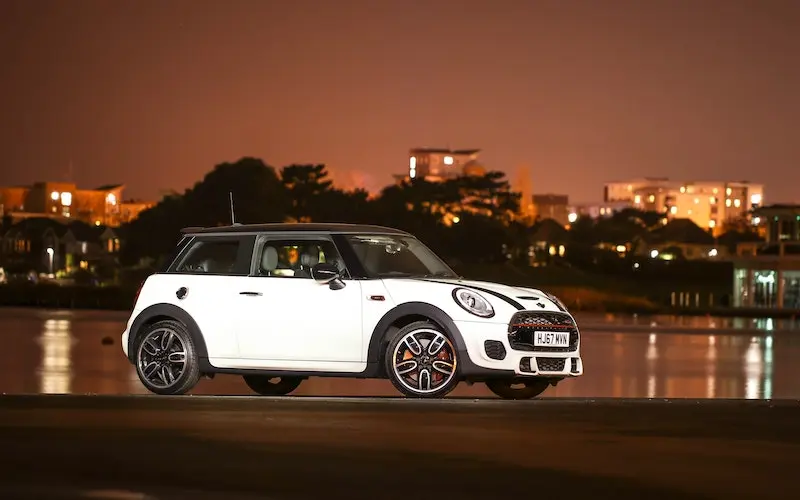With its cute rounded shape and perky driving dynamics, the Mini Cooper has captivated audiences worldwide. The compact Mini gives drivers a unique combination of retro-style charm, go-kart handling, and endless customization potential.
But what exactly is a Mini Cooper beneath the quirky exterior? Let’s explore What Kind of Car is the Mini Cooper, its origins and key characteristics that define this iconic hatchback.
Origins and History of the Mini
The original Mini debuted in 1959 as a revolutionary small car design conceived by Sir Alec Issigonis and built by the British Motor Corporation. The compact, transverse-engine, front-wheel drive Mini provided seating for four despite an absurdly small overall footprint.
Thanks to its creative packaging, fun driving dynamics and low pricing, the Mini became an icon of 1960s Britain, famously starring in the 1969 film The Italian Job. Over 5 million original Minis sold before the final one rolled off the line in 2000.
BMW revived Mini in 2001 with an all-new, more refined and sophisticated Cooper retaining the spirit and style of the original. Customization options galore and improved performance cemented the Mini’s appeal globally.
Identifying Mini Cooper Models and Variants
Since its BMW-led relaunch, the revived Mini brand has expanded into a family of related small cars available in many flavors:
Hardtop – The core two-door and four-door Mini hatchback available in Cooper, Cooper S and John Cooper Works tuning levels.
Convertible – Two-door droptop variant with power-retractable fabric roof.
Clubman – Wagon-style Mini with rear “barn door” style split tailgate.
Countryman – Largest Mini SUV model with all-wheel drive capability.
Paceman – Two-door coupe SUV version based off Countryman mechanicals. Only sold from 2012-2015.
No matter the Mini body style, all models deliver quintessential Mini driving fun and personalization.
Powertrain and Performance
All Mini models utilize front-wheel drive with transverse-mounted engines. Three main engine options have powered Minis since the 2001 relaunch:
1.5L 3-Cyl Turbo – Provides Cooper and Cooper S models with 134 to 189 horsepower. Offers pleasing fuel efficiency.
2.0L 4-Cyl Turbo – Powers the fastest John Cooper Works trims to 301 horsepower. Delivers a big punch in the small Mini.
1.5L 3-Cyl Hybrid – Alternative hybrid powertrain available on some trims providing up to 219 total horsepower.
Paired with either 6-speed manual or 6/8-speed automatic transmissions, Mini engines deliver sprightly acceleration backed by agile handling.
Signature Mini Cooper Design Details
Several key retro-modern design elements make a Mini instantly recognizable:
- Rounded, chunky overall shape
- Small diameter wire-spoke wheels pushed out to corners
- Circular headlights and grille
- Contrasting black and white roofs
- Short front and rear overhangs
- Hood stripes, mirrors and roofs in British flag motif
Owners often adorn their Minis with colorful graphics and stripes for maximum personality. The interior also features color accents, toggles switches and a central speedometer harkening back to the original 1960s Mini.
What’s the Driving Experience Like?
From the start, Mini has emphasized the fun factor behind the wheel above all. Modern Minis carry on that tradition with characteristics like:
- Laser-sharp steering and handling reflexes
- Firm suspension tuning for flat cornering
- Pronounced wheel articulation provides feedback
- Powerful brakes for repeated slowing
- Short gearing in manual models enhances acceleration
- Rev-happy engines urge exploration of the rev band
Everything about the Mini is tuned to deliver agile “go-kart” reflexes urging drivers to tap into the excitement. It begs to be pushed hard through challenging roads.
How Did Mini Redefine the Small Car?
Sir Alec Issigonis’ original Mini design forever reimagined the small car formula. Revolutionary elements included:
- Super-compact transverse engine and front-wheel drive
- Wheels pushed out to corners maximizing interior room
- Innovative rubber cone suspension absorbed bumps
- Phone-booth shape with low footprint
- Improved handling and traction compared to rivals
- Surprisingly spacious 4-seat interior
- Customization through creative paint schemes
These qualities established the template for nearly all modern compact cars. The Mini’s inventive packaging and peppy performance made small fun and practical in a way never seen before 1959.
Why the Mini Became an Icon
Several factors helped cement the Mini’s cultural icon status:
- Starred in movies like The Italian Job showcasing its agility.
- Became a symbol of Britain’s Swinging Sixties youth culture.
- Allowed personal expression through endless customization.
- Found fame in auto racing thanks to superb handling.
- Owned by celebrities from The Beatles to Steve McQueen.
- Represented affordable performance and innovation.
For over 50 years, the cheeky Mini has maintained global fame as a lovable symbol of style and zippy driving spirit.
Conclusion
Since its revolutionary introduction in 1959, the Mini has forever redefined what a small car can be. Its ingenious packaging, fun driving dynamics, cheeky personality and embrace of customization created an automotive icon celebrated worldwide.
Through the decades the Mini has represented imagination, individuality and that little car magic that puts a smile on drivers’ faces. For all its tiny dimensions, this plucky hatchback’s impact continues to loom large.
